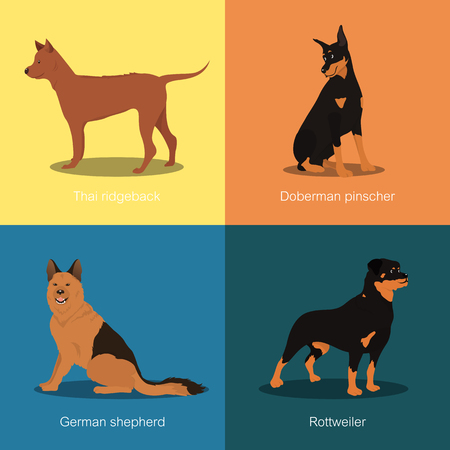1. Understanding the Grooming Needs of Small Pets
Proper grooming is essential to keep your small pets healthy and happy. Different types of small animals have unique grooming requirements, so understanding their specific needs will help you provide the best care possible.
Grooming Needs by Pet Type
Each type of small pet has its own grooming routine. Some require frequent brushing, while others need nail trimming or ear cleaning. Here’s a quick guide to their basic grooming needs:
| Pet Type | Main Grooming Needs | Frequency |
|---|---|---|
| Rabbits | Brushing, nail trimming, ear cleaning | Brushing: Weekly; Nail trimming: Monthly |
| Guinea Pigs | Brushing, nail trimming, occasional baths | Brushing: 2-3 times per week; Nail trimming: Monthly |
| Hamsters | Sand baths, occasional fur checks | Bathing: As needed; Fur checks: Weekly |
| Ferrets | Nail trimming, ear cleaning, occasional baths | Nail trimming: Bi-weekly; Ear cleaning: Monthly |
The Importance of Regular Grooming
Regular grooming helps prevent health issues such as matted fur, overgrown nails, and ear infections. It also strengthens the bond between you and your pet. By establishing a consistent grooming routine, you can ensure that your pet remains comfortable and well-maintained.
Avoid Over-Grooming
While grooming is necessary, overdoing it can cause stress or even harm your pet. For example, bathing a guinea pig too often can dry out its skin, and excessive brushing may irritate a rabbit’s coat. Always follow recommended guidelines for each species.
Tips for Stress-Free Grooming Sessions
- Create a Calm Environment: Choose a quiet space where your pet feels safe.
- Use the Right Tools: Soft brushes, pet-safe nail clippers, and gentle cleaning solutions are essential.
- Go Slow and Be Gentle: Sudden movements can startle small pets, so take your time.
- Reward Your Pet: Offering treats after grooming helps reinforce positive behavior.
Caring for your small pet’s hygiene doesn’t have to be difficult. With the right knowledge and tools, you can ensure they stay clean, healthy, and comfortable.
2. Essential Grooming Tools and Supplies
Keeping your small pet clean and well-groomed is essential for their overall health and happiness. Whether you have a rabbit, guinea pig, hamster, or ferret, having the right grooming tools and hygiene supplies will make the process easier and more effective. Below, we’ll go over the must-have grooming essentials to keep your furry friend looking and feeling their best.
Basic Grooming Tools for Small Pets
Every small pet has different grooming needs, but there are some universal tools that every pet owner should have. Here’s a breakdown of essential grooming tools:
| Grooming Tool | Purpose | Best For |
|---|---|---|
| Soft-Bristle Brush | Removes loose fur, prevents matting | Rabbits, guinea pigs, ferrets |
| Comb with Fine Teeth | Helps detangle and remove debris | Long-haired small pets |
| Nail Clippers (Small Size) | Keeps nails trimmed to prevent overgrowth | All small pets |
| Pet-Safe Wipes | Cleans paws, face, and fur between baths | All small pets |
| Dust Bath (for Chinchillas) | Removes excess oils from fur naturally | Chinchillas |
| Ear Cleaning Solution | Keeps ears free from wax buildup and infections | Ferrets and rabbits |
| Toothbrush & Pet-Safe Toothpaste | Maintains oral health and prevents dental issues | Rabbits and ferrets |
| Grooming Scissors (Rounded Tips) | Trims long fur safely without injury risk | Long-haired small pets |
| Bathing Powder or Dry Shampoo | Cleans fur without water for pets that shouldn’t be bathed often | Hamsters, guinea pigs, rabbits |
The Importance of Choosing Pet-Safe Products
When selecting grooming supplies, always choose products specifically made for small animals. Human shampoos, wipes, or nail clippers may contain harsh chemicals or be too rough for delicate skin and fur. Look for products labeled as “pet-safe,” “small animal-friendly,” or recommended by veterinarians.
Tips for Stress-Free Grooming Sessions
- Start Slow: If your pet isn’t used to grooming, introduce each tool gradually to help them feel comfortable.
- Create a Routine: Regular brushing or nail trimming makes the process easier over time.
- Use Treats: Reward your pet with a treat after each session to create positive associations.
- Be Gentle: Small pets have delicate skin; always use soft strokes and avoid pulling on fur.
- Check for Signs of Health Issues: While grooming, look out for unusual lumps, bald spots, or signs of infection.
A Clean Pet is a Happy Pet!
A proper grooming routine helps keep your small pet healthy while strengthening your bond with them. By investing in the right tools and using gentle techniques, you can ensure that your furry companion stays comfortable and well cared for.

3. Bathing and Coat Care
Keeping your small pet clean is essential for their overall health and comfort. However, not all small pets need regular baths, and some can even be harmed by frequent washing. Lets explore which pets require bathing, how to clean their fur properly, and tips for managing shedding and matting.
Do Small Pets Need Regular Baths?
Unlike dogs, most small pets do not need frequent baths. In fact, some animals, like rabbits and chinchillas, should never be bathed with water as it can harm their skin and coat. Below is a quick guide on which small pets require baths and which do not:
| Small Pet | Bathing Needs |
|---|---|
| Rabbits | Avoid water baths; use spot cleaning if necessary. |
| Guinea Pigs | Rarely needed; only when dirty or advised by a vet. |
| Hamsters | No water baths; offer a sand bath instead. |
| Chinchillas | Never use water; provide dust baths regularly. |
| Ferrets | Occasional baths (once every few months) with ferret-safe shampoo. |
| Hedgehogs | Can have occasional gentle baths if dirty. |
How to Properly Clean Your Pet’s Fur
Spot Cleaning for Small Pets
If your pet gets dirty, spot cleaning is often the best approach. Use a damp cloth or pet-safe wipes to gently remove dirt from their fur without soaking them completely.
Bathing Ferrets and Hedgehogs
If your pet does require a bath, follow these steps:
- Use lukewarm water in a shallow basin.
- Select a mild, pet-safe shampoo.
- Gently lather and rinse thoroughly to avoid residue buildup.
- Dry with a soft towel and keep them warm until fully dry.
Managing Shedding and Matting
Brushing to Reduce Shedding
Regular brushing helps control loose fur and prevents excessive shedding. Here are some brushing tips based on pet type:
- Rabbits & Guinea Pigs: Use a soft-bristle brush weekly.
- Long-haired breeds: Daily brushing is recommended to prevent tangles.
- Short-haired breeds: Brushing once or twice a week is usually sufficient.
Tackling Matting in Long-Haired Pets
Matted fur can be uncomfortable for small pets. To prevent mats:
- Brush daily for long-haired pets like Angora rabbits or Peruvian guinea pigs.
- If mats form, use a detangling comb or consult a vet before cutting them out.
- Avoid excessive moisture, as damp fur can lead to matting.
By understanding your pet’s specific grooming needs, you can keep their coat clean, healthy, and free of discomfort. Always use pet-safe products and handle your furry friend gently during any grooming routine!
4. Nail Trimming and Dental Hygiene
Keeping your small pet’s nails and teeth in good condition is essential for their overall health and comfort. Overgrown nails can cause discomfort or even injury, while poor dental hygiene can lead to serious health issues. Regular trimming and proper dental care will help keep your furry friend happy and healthy.
Understanding the Importance of Nail Care
Nail trimming is a crucial part of grooming for small pets. If their nails grow too long, they may have difficulty walking, experience pain, or even develop infections from broken nails. Regular trimming helps prevent these issues.
How Often Should You Trim Your Pet’s Nails?
| Pet Type | Nail Trimming Frequency |
|---|---|
| Rabbits | Every 4-6 weeks |
| Guinea Pigs | Every 3-4 weeks |
| Hamsters & Gerbils | If needed (some wear them down naturally) |
| Ferrets | Every 2-3 weeks |
Tips for Safe Nail Trimming
- Use the Right Tools: Small pet nail clippers or human nail clippers work well for most small animals.
- Avoid Cutting Too Short: Be cautious of the quick (the pink area inside the nail), as cutting it can cause bleeding.
- If Unsure, Trim Gradually: Trim a little at a time to avoid accidents.
- Have Styptic Powder Ready: In case you accidentally cut too short, styptic powder can stop the bleeding.
- Create a Calm Environment: Hold your pet gently but firmly to prevent sudden movements during trimming.
The Importance of Dental Health
A pet’s teeth play a vital role in their overall well-being. Many small pets, like rabbits and guinea pigs, have continuously growing teeth that require regular maintenance. Poor dental hygiene can lead to overgrown teeth, infections, or difficulty eating.
Tips for Maintaining Healthy Teeth
- Provide Chew Toys: Wooden chew toys, hay, or safe chew sticks help wear down teeth naturally.
- A Balanced Diet: Feeding fibrous foods like hay helps maintain dental health by promoting natural grinding.
- Dental Checks: Regularly inspect your pet’s teeth for overgrowth, discoloration, or signs of discomfort.
- Avoid Sugary Treats: Too many sugary snacks can contribute to dental issues and decay.
Sings of Dental Problems
| Signs of Issues | Possible Causes |
|---|---|
| Drooling or Wet Fur Around Mouth | Mouth pain or dental infection |
| Lack of Appetite | Pain from overgrown or misaligned teeth |
| Poor Grooming Habits | Mouth discomfort preventing normal cleaning behaviors |
| Pawing at Mouth | Irritation from sharp or overgrown teeth |
Nail and dental care are essential aspects of keeping your small pet comfortable and healthy. By incorporating regular maintenance into your pet care routine, you can prevent common problems and ensure your furry companion lives a happy life.
5. Cleaning Your Pets Habitat
Keeping your small pet’s living space clean is essential for their health and happiness. A dirty habitat can lead to unpleasant odors, bacterial growth, and even health issues. By following a regular cleaning schedule and using safe disinfecting techniques, you can ensure your pet has a fresh and hygienic home.
How Often Should You Clean?
The frequency of cleaning depends on the type of pet you have, the size of their habitat, and how quickly waste accumulates. Here’s a general guideline:
| Cleaning Task | Frequency |
|---|---|
| Spot Cleaning (removing waste, uneaten food) | Daily |
| Bedding or Litter Change | Every 2-3 Days |
| Cage or Enclosure Wipe Down | Weekly |
| Deep Cleaning & Disinfection | Every 2-4 Weeks |
The Right Way to Clean Your Pet’s Habitat
1. Daily Spot Cleaning
Remove droppings, uneaten food, and soiled bedding every day. This prevents odors from building up and keeps your pet comfortable.
2. Weekly Wipe Down
A once-a-week wipe down with warm water and mild soap helps keep surfaces clean. Avoid harsh chemicals that could harm your pet.
3. Deep Cleaning & Disinfection
A thorough cleaning every few weeks is necessary to remove bacteria and buildup. Follow these steps:
Step 1: Remove Your Pet
Place your pet in a safe temporary enclosure while you clean.
Step 2: Empty the Cage
Take out all bedding, toys, food bowls, and accessories.
Step 3: Wash Everything Thoroughly
Use warm water and pet-safe disinfectant to scrub the cage and accessories. Rinse well to remove any residue.
Step 4: Let It Dry Completely
Damp environments promote bacteria growth, so make sure everything is fully dry before reassembling.
Step 5: Add Fresh Bedding & Return Accessories
Add new bedding or litter, clean food bowls, and fresh water before placing your pet back in their habitat.
Tips for Keeping Odors Under Control
- Avoid Overcrowding: Too many pets in one space can lead to faster waste buildup.
- Select the Right Bedding: Some materials absorb odors better than others—opt for paper-based or aspen shavings.
- Add Baking Soda: A small amount under the bedding can help neutralize smells.
- Cage Placement: Keep the habitat in a well-ventilated area to prevent stagnant air.
A clean environment means a happier, healthier pet! By following these cleaning guidelines, you’ll provide your furry friend with a fresh and comfortable home.
6. Common Grooming Issues and How to Solve Them
Keeping your small pet well-groomed is essential for their overall health and happiness. However, some common grooming issues can arise, making it important to recognize and address them early. Below are some frequent grooming problems and how you can solve them.
Dry Skin
Dry skin is a common issue in small pets, often caused by environmental factors, diet, or improper bathing techniques.
Signs of Dry Skin:
- Flaky or scaly patches
- Excessive scratching
- Dull or brittle fur
How to Treat and Prevent:
- Use a pet-safe moisturizer or coconut oil (vet-approved).
- Avoid over-bathing; wash only when necessary with a mild shampoo.
- Add omega-3 fatty acids to their diet for healthier skin.
- Ensure proper humidity levels in your home.
Overgrown Nails
Nails that grow too long can cause discomfort, difficulty walking, and even injuries.
Signs of Overgrown Nails:
- Nails curling under the paw
- Pets struggling to walk properly
- Nail clicking on hard surfaces
How to Trim Safely:
- Use pet-specific nail clippers or a grinder.
- Avoid cutting the quick (the pink part inside the nail) to prevent bleeding.
- If unsure, consult a vet or groomer for assistance.
- Create a regular trimming schedule (every 2-4 weeks).
Ear Infections
Ears are sensitive areas prone to infections if not cleaned regularly. Certain breeds with floppy ears are more susceptible.
Signs of an Ear Infection:
- Foul odor coming from the ears
- Your pet shaking their head frequently
- Pawing at their ears
- Dirt or dark wax buildup
Treatment and Prevention:
- Cleans ears gently with a vet-approved solution once a week.
- Avoid using cotton swabs deep inside the ear canal.
- If an infection is suspected, seek veterinary care immediately.
Summary of Common Grooming Issues and Solutions
| Grooming Issue | Main Causes | Treatment & Prevention |
|---|---|---|
| Dry Skin | Lack of moisture, poor diet, excessive bathing | Add omega-3s to diet, use pet-safe moisturizers, avoid over-bathing |
| Overgrown Nails | Lack of regular trimming, inactivity | Trim every 2-4 weeks using proper tools, consult a vet if needed |
| Ear Infections | Buildup of dirt/wax, allergies, moisture retention | Cleans ears weekly with vet-approved solution; see a vet if signs appear |
Tackling these common grooming issues promptly will help keep your small pet comfortable and healthy. Regular checks and gentle care can prevent most problems before they become serious concerns.


